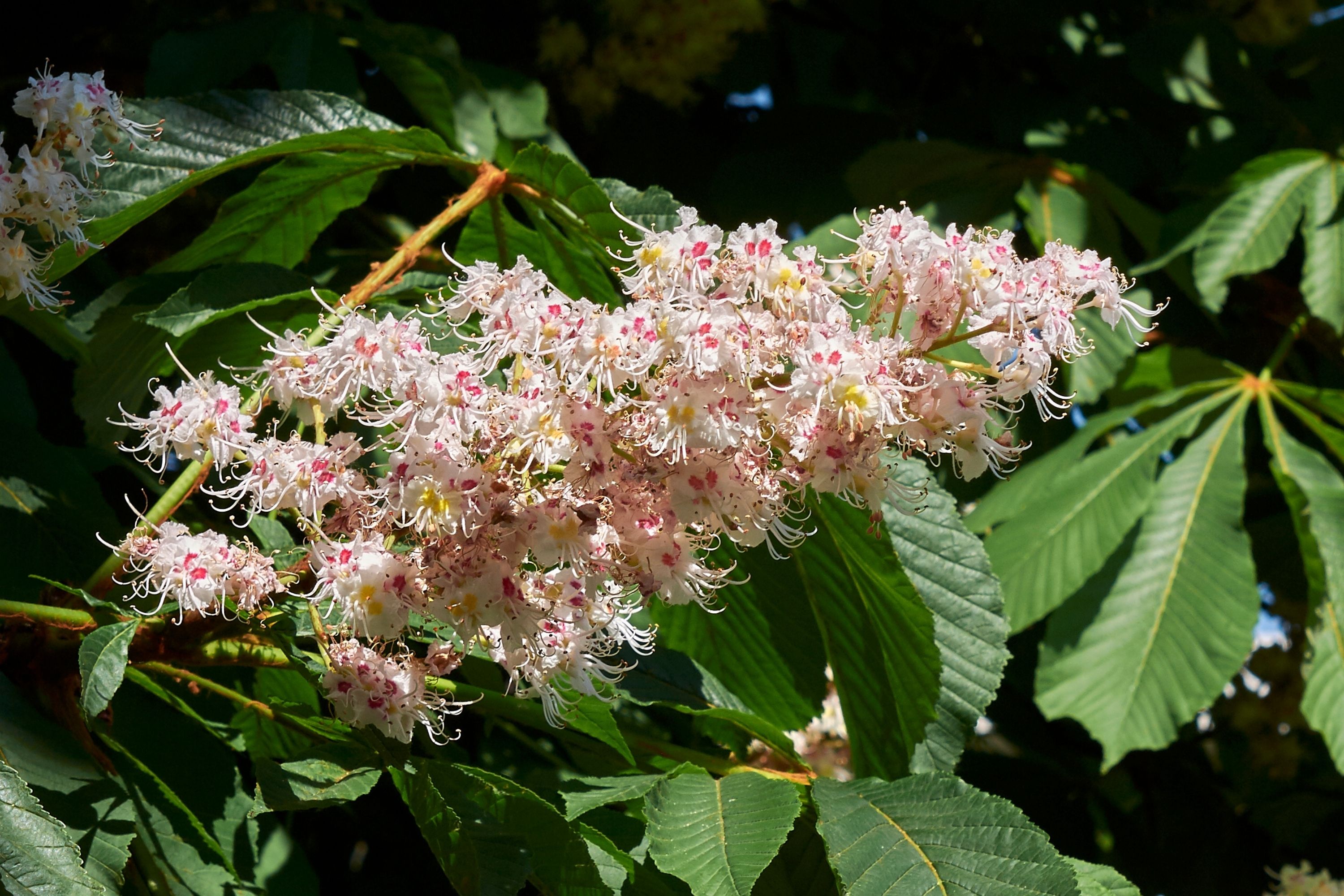Horse Chestnut
(Aesculus hippocastanum)

Description
Aesculus hippocastanum, commonly known as the horse chestnut tree, is a species of deciduous tree native to southeastern Europe and western Asia. It is a member of the Hippocastanaceae family and is widely grown as an ornamental tree in many parts of the world. Description: The horse chestnut tree can grow up to 100 feet tall with a spread of 50 to 70 feet. It has a broad, rounded crown and a straight trunk that can reach up to 4 feet in diameter. The leaves are opposite and palmately compound, with 5 to 7 leaflets that are elliptical in shape and have toothed margins. The leaves are dark green in color and can grow up to 12 inches long. In the fall, the leaves turn yellow and brown before dropping off the tree. The horse chestnut tree is a flowering tree, with large clusters of white or pinkish flowers that bloom in the spring. The flowers are arranged in panicles that can grow up to 12 inches long. Each individual flower has 5 petals and a central cluster of stamens. The flowers are followed by fruit in the form of a large, prickly capsule that contains 1 to 3 shiny brown seeds. The seeds, commonly called conkers, are poisonous if eaten raw but can be roasted and eaten or used to make a variety of products, including shampoo and soap. Cultivation: The horse chestnut tree prefers well-drained soils that are rich in organic matter. It grows best in full sun but can tolerate some shade. The tree is hardy in USDA zones 4 to 7 and is relatively pest and disease-free. Propagation of the horse chestnut tree can be done by seed or by grafting. Seeds should be planted in the fall and allowed to overwinter before germinating in the spring. Grafting is a more reliable method of propagation and can be done in the spring or fall. Uses: The horse chestnut tree is primarily grown as an ornamental tree for its showy flowers and attractive foliage. It is also used as a shade tree and can be planted in parks, gardens, and along streets. The tree has a moderate growth rate and can live for up to 300 years. In addition to its ornamental value, the horse chestnut tree has a number of medicinal properties. The seeds contain a compound called aescin, which is used to treat a variety of conditions, including chronic venous insufficiency, hemorrhoids, and varicose veins. Aescin is also used in cosmetic products to reduce inflammation and swelling. Conclusion: Aesculus hippocastanum, or the horse chestnut tree, is a beautiful and versatile tree that has many uses. From its showy flowers to its medicinal properties, it is a valuable addition to any landscape. Whether planted in a park, a garden, or along a street, the horse chestnut tree is sure to provide many years of enjoyment and benefits.
Taxonomic tree:







